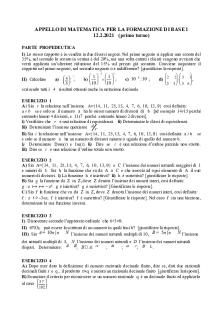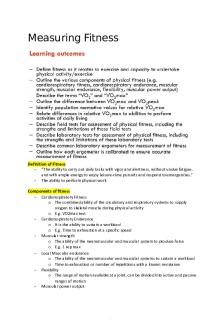G Power Guide PDF

| Title | G Power Guide |
|---|---|
| Author | Nisar Ahmed Channa |
| Course | Business Research |
| Institution | Sukkur Institute of Business Administration |
| Pages | 35 |
| File Size | 1.6 MB |
| File Type | |
| Total Downloads | 34 |
| Total Views | 147 |
Summary
G Power Guide...
Description
Version 1.1 (11/11/2019)
Introduction to sample size calculation using G*Power James Bartlett ([email protected]) Principles of frequentist statistics The problem of low statistical power Installing G*Power Types of tests T-tests Correlation Analysis of Variance (ANOVA) More advanced topics How to calculate an effect size from a test statistic How to increase statistical power References
Principles of frequentist statistics In order to utilise power analysis, it is important to understand the statistics we commonly use in psychology, known as frequentist or classical statistics. This is a theory of statistics where probability is assigned to long-run frequencies of observations, rather than assigning a likelihood to one particular event. This is the basis of where you get p v alues from. The formal definition of a p value is the probability of observing a result at least as extreme as the one observed, assuming the null hypothesis is true (Cohen, 1994). This means a small p value indicates the results are surprising if the null hypothesis is true, and a large p value indicates the results are not very surprising if the null is true. The aim of this branch of statistics is to help you make decisions and limit the amount of errors you will make in the long-run (Neyman, 1977). There is a real emphasis on long-run here, as the probabilities do not relate to individual cases or studies, but tell you the probability attached to the procedure if you repeated it many times. There are two important concepts here: alpha and beta. Alpha is the probability of concluding there is an effect when there is not one (type I error). This is normally set at .05 (5%) and it is the threshold we look at for a significant effect. Setting alpha to .05 means we are willing to make a type I error 5% of the time in the long run. Beta is the probability of concluding there is not an effect when there really is one (type II error). This is normally set at .2 (20%), which
Version 1.1 (11/11/2019)
means we are willing to make a type II error 20% of the time in the long run. These values are commonly used in psychology, but you could change them. However, both values should ideally decrease rather than increase the number of errors you are willing to accept. Power is the ability to detect an effect if there is one there to be found. Or in other words “if an effect is a certain size, how likely are we to find it?” (Baguley, 2004; 73). Power relates to beta, as power is 1 - beta. Therefore, if we set beta to .2, we can expect to detect a particular effect size 80% of the time if we repeated the procedure over and over. Carefully designing an experiment in advance allows you to control the type I and type II error rate you would expect in the long run. However, studies have shown that these two concepts are not given much thought when designing experiments.
The problem of low statistical power There is a long history of warnings about low power. One of the first articles was Cohen (1962) who found that the sample sizes used in articles only provided enough power to detect large effects (by Cohen’s guidelines a standardised mean difference of 0.80). The sample sizes were too small to reliably detect small to medium effects. This was also the case in the 1980s (Sedlmeier & Gigerenzer, 1989), and it is still a problem in contemporary research (Button et al., 2013). One reason for this is that people often use “rules of thumb”, such as always including 20 participants per cell. However, this is not an effective strategy. Even experienced researchers overestimate the power provided by a given sample size, and underestimate the number of participants required for a given effect size (Bakker, Hartgerink, Wicherts, & van der Maas, 2016). This shows you need to think carefully about power when you are designing an experiment. The implications of low power is a waste of resources and a lack of progress. A study that is not sensitive to detect the effect of interest will just produce a non-significant finding more often than not. However, this does not mean there is no effect, just that your test was not sensitive enough to detect it. One analogy (paraphrased from this lecture by Richard Morey) to help understand this is trying to tell two pictures apart that are very blurry. You can try and squint, but you just cannot make out the details to compare them with any certainty. This is like trying to find a significant difference between groups in an underpowered study. There might be a difference, but you just do not have the sensitivity to differentiate the groups. In order to design an experiment to be informative, it should be sufficiently powered to detect effects which you think are practically interesting (Morey & Lakens, 2016). This is sometimes called the smallest effect size of interest. Your test should be sensitive enough to avoid missing any values that you would find practically or theoretically interesting. Fortunately, there is a way to calculate how many participants are required to provide a sufficient level of power known as power analysis. In the simplest case, there is a direct relationship between statistical power, the effect you are interested in, alpha, and the sample size. This means that if you know three of these values,
Version 1.1 (11/11/2019)
you can calculate the fourth. For more complicated types of analyses, you need some additional parameters, but we will tackle this as we come to it. The most common types of power analysis are a priori a nd sensitivity. An a priori p ower analysis tells you how many participants are required to detect a given effect size. A sensitivity power analysis tells you what effect sizes your sample size is sensitive to detect. Both of these types of power analysis can be important for designing a study and interpreting the results. If you need to calculate how many participants are required to detect a given effect, you can perform an a priori p ower analysis. If you know how many participants you have (for example you may have a limited population or did not conduct an a priori power analysis), you can perform a sensitivity power analysis to calculate which effect sizes your study is sensitive enough to detect. Another type of power analysis you might come across is post-hoc. This provides you with the observed power given the sample size, effect size, and alpha. You can actually get SPSS to provide this in the output. However, this type of power analysis is not recommended as it fails to consider the long run aspect of these statistics. There is no probability attached to individual studies. There is either an effect observed (significant p value), or there is not an effect observed (non-significant p value). I highly recommend ignoring this type of power analysis and focusing on a priori or sensitivity power analyses. For this guide, we are going to look at how you can use G*Power (Faul, Erdfelder, Buchner, & Lang, 2009) to estimate the sample size you need to detect the effect you are interested in, and the considerations you need to make when designing an experiment.
Installing G*Power G*Power is a free piece of software developed at Universität Düsseldorf in Germany. Unfortunately it is no longer in development, with the last update being in July 2017. Therefore, the aim of this guide is to help you navigate using G*Power as it is not the most user friendly programme. You can download G*Power on this page. Under the heading “download” click on the appropriate version for whether you have a Windows or Mac computer. Follow the installation instructions and open it up when it has finished installing.
Version 1.1 (11/11/2019)
Types of tests T-tests To start off, we will look at the simplest example in t-tests. We will look at how you can calculate power for an independent samples and paired samples t-test.
Independent samples t-test (a priori) If you open G*Power, you should have a window that looks like this:
We are going to begin by seeing how you can calculate power a priori for an independent samples t-test. First, we will explore what each section of this window does. ● Test family - To select the family of test such as t tests, F tests (ANOVA), or 𝜒2. We need the default t tests for this example, so keep it as it is. ● Statistical test - To select the specific type of test. Within each family, there are several different types of test. For the t-test, you can have two groups, matched pairs, and several others. For this example, we need two groups.
Version 1.1 (11/11/2019)
●
●
●
Type of power analysis - This is where we choose whether we want an a priori or sensitivity power analysis. For this example we want a priori to calculate the sample size we need in advance to detect a given effect. Input parameters - these are the values we need to specify to conduct the power analysis, we will go through these in turn. ○ Tails - is the test one- or two-tailed? ○ Effect size d - this is the standardised effect size known as Cohen’s d. Here we can specify our smallest effect size of interest. ○ α err prob - this is our long run type one error rate which is conventionally set at .05. ○ Power (1 - β err prob) - this is our long run power. Power is normally set at .80 (80%), but some researchers argue that this should be higher at .90 (90%). ○ Allocation ratio N2 / N1 - this specifically applies to tests with two groups. If this is set to 1, sample size is calculated by specifying equal group sizes. Unequal group sizes could be specified by changing this parameter. Output parameters - if we have selected all the previous options and pressed calculate, this is where our required sample size will be.
The most difficult part in calculating the required sample size is deciding on an effect size. The end of this guide is dedicated to helping you think about or calculate the effect size needed to power your own studies. When you are less certain of the effects you are anticipating, you can use general guidelines. For example, Cohen’s (1988) guidelines (e.g. small: Cohen’s d = 0.2, medium: Cohen’s d = 0.5, large: Cohen’s d = 0.8) are still very popular. Other studies have tried estimating the kind of effects that can be expected from particular fields. For this example, we will use Richard, Bond, & Stokes-Zoota (2003) who conducted a gargantuan meta-analysis of 25,000 studies from different areas of social psychology. They wanted to quantitatively describe the last century of research and found that across all studies, the average standardised effect size was d = 0.43. We can use this as a rough guide to how many participants we would need to detect an effect of this size. We can plug these numbers into G*Power and select the following parameters: tail(s) = two, effect size d = 0.43, α err prob = .05, Power (1 - β err prob) = 0.8, and Allocation ratio N2 / N1 = 1. You should get the following window:
Version 1.1 (11/11/2019)
This tells us that to detect the average effect size in social psychology, we would need two groups of 86 participants (N = 172) to achieve 80% power in a two-tailed test. This is a much bigger sample size than what you would normally find for the average t-test reported in a journal article. This would be great if you had lots of resources, but as a psychology student, you may not have the time to collect this amount of data. For modules that require you to conduct a small research project, follow the sample size guidelines in the module, but think about what sample size you would need if you were to conduct the study full scale and incorporate it into your discussion. Now that we have explored how many participants we would need to detect the average effect size in social psychology, we can tinker with the parameters to see how the number of participants changes. This is why it is so important to perform a power analysis before you start collecting data, as you can explore how changing the parameters impacts the number of participants you need. This allows you to be pragmatic and save resources where possible.
Version 1.1 (11/11/2019)
●
●
●
Tail(s) - if you change the number of tails to one, this decreases the number of participants in each group from 86 to 68. This saves a total of 36 participants. If your experiment takes 30 minutes, that is saving you 18 hours worth of work while still providing your experiment with sufficient power. However, using one-tailed tests can be a contentious area. See Ruxton & Neuhäuser (2010) for an overview of when you can justify using one-tailed tests. α err prob - setting alpha to .05 says in the long run, we want to limit the amount of type I errors we make to 5%. Some suggest this is too high, and we should use a more stringent error rate. If you change α err prob to .01, we would need 128 participants in each group, 84 more participants than our first estimate (42 more hours of data collection). Power (1 - β err prob) - this is where we specify the amount of type II errors we are willing to make in the long run. This also has a conventional level of .80. There are also calls for studies to be designed with a lower type II error rate by increasing power to .90. This has a similar effect to lowering alpha. If we raise Power (1 - β err prob) to .90, we would need 115 participants in each group, 58 more than our first estimate (29 more hours of data collection).
It is important to balance creating an informative experiment with the amount of resources available. This is why it is crucial this is performed in the planning phase of a study, as these kind of decisions can be made before any participants have been recruited. How can this be reported? If we were to state this in a proposal or participants section of a report, the reader needs the type of test and parameters in order to recreate your estimates. For the original example, we could report it like this: “In order to detect an effect size of Cohen’s d = 0.43 with 80% power (alpha = .05, two-tailed), G*Power suggests we would need 86 participants per groups (N = 172) in an independent samples t-test”. This provides the reader with all the information they would need in order to reproduce the power analysis, and ensure you have calculated it accurately.
Independent samples t-test (sensitivity) Selecting an effect size of interest for an a priori power analysis would be an effective strategy if we wanted to calculate how many participants are required before the study began. Now imagine we had already collected data and knew the sample size, or had access to a specific population of a known size. In this scenario, we would conduct a sensitivity power analysis. This would tell us what effect sizes the study would be powered to detect in the long run for a given alpha, beta, and sample size. This is helpful for interpreting your results in the discussion, as you can outline what effect sizes your study was sensitive enough to detect, and which effects
Version 1.1 (11/11/2019)
would be too small for you to reliably detect. If you change type of power analysis to sensitivity, you will get the following screen with slightly different input parameters:
All of these parameters should look familiar apart from Sample size group 1 and 2, and effect size d is now under Output Parameters. Imagine we had finished collecting data and we knew we had 40 participants in each group. If we enter 40 for both group 1 and 2, and enter the standard details for alpha (.05), power (.80), and tails (two), we get the following output:
Version 1.1 (11/11/2019)
This tells us that the study is sensitive to detect effect sizes of d = 0.63 with 80% power. This helps us to interpret the results sensibly if your result was not significant. If you did not plan with power in mind, you can see what effect sizes your study is sensitive to detect. We would not have enough power to reliably detect effects smaller than d = 0.63 with this number of participants. It is important to highlight here that power exists along a curve. We have 80% power to detect effects of d = 0.63, but we have 90% power to detect effects of approximately d = 0.73 or 50% power to detect effects of around d = 0.45. This can be seen in the following figure which you can create in G*Power using the X-Y plot for a range of values button:
Version 1.1 (11/11/2019)
This could also be done for an a priori power analysis, where you see the power curve for the number of participants rather than effect sizes. This is why it is so important you select your smallest effect size of interest when planning a study, as it will have greater power to detect larger effects, but power decreases if the effects are smaller than anticipated. How can this be reported? We can also state the results of a sensitivity power analysis in a report, and the best place is in the discussion as it helps you to interpret your results. For the example above, we could report it like this: “An independent samples t-test with 40 participants per groups (N = 80) would be sensitive to effects of Cohen’s d = 0.63 with 80% power (alpha = .05, two-tailed). This means the study would not be able to reliably detect effects smaller than Cohen’s d = 0.63”. This provides the reader with all the information they would need in order to reproduce the sensitivity power analysis, and ensure you have calculated it accurately.
Paired samples t-test (a priori) In the first example, we looked at how we could conduct a power analysis for two groups of participants. Now we will look at how you can conduct a power analysis for a within-subjects design consisting of two conditions. If you select Means (matched pairs) from the statistical test area, you should get a window like below:
Version 1.1 (11/11/2019)
Now this is even simpler than when we wanted to conduct a power analysis for an independent samples t-test. We only have four parameters as we do not need to specify the allocation ratio. As it is a paired samples t-test, every participant must contribute a value for each condition. If we repeat the parameters from before and expect an effect size of d = 0.43 (here it is called dz for the within-subjects version of Cohen’s d), your window should look like this:
Version 1.1 (11/11/2019)
This suggests we would need 45 participants to achieve 80% power using a two-tailed test. This is 127 participants fewer than our first estimate (saving approximately 64 hours of data collection). This is a very important lesson. Using a within-subjects design will always save you participants for the simple reason that instead of every participant contributing one value, they are contributing two values. Therefore, it approximately halves the sample size you need to detect the same effect size (I recommend Daniël Laken’s b log post to learn more). When you are designing a study, think about whether you could convert the design to within-subjects to make it more efficient.
Version 1.1 (11/11/2019)
How can this be reported? For this example, we could report it like this: “In order to detect an effect size of Cohen’s d = 0.43 with 80% power (alpha = .05, two-tailed), G*Power suggests we would need 45 participants in a paired samples t-test”. This provides the reader with all the information they would need in order to reproduce the power analysis, and ensure you have calculated it accurately.
Paired samples t-test (sensitivity) If we change the type of power analysis to sensitivity, we can see what effect sizes a within-subjects design is sensitive enough to detect. Imagine we sampled from 30 participants without performing an a priori power analysis. Set the inputs to .05 (alpha) and .80 (Power), and you should get the following output when you press calculate:
Version 1.1 (11/11/2019)
This shows that the design would be sensitive to detect an effect size of d = 0.53 with 30 participants...
Similar Free PDFs
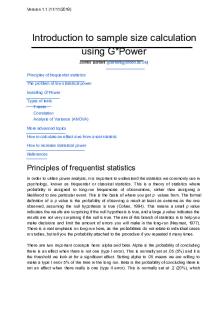
G Power Guide
- 35 Pages

G*Power Notes - Instructions
- 6 Pages

R531 Study Guide Power
- 12 Pages

O&G MSRA Applicant Guide
- 11 Pages

Assignment 1 - g g
- 3 Pages
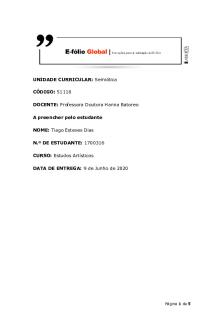
Efolio G
- 5 Pages
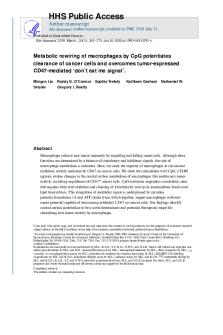
Cp G
- 30 Pages

G Greene
- 4 Pages
Popular Institutions
- Tinajero National High School - Annex
- Politeknik Caltex Riau
- Yokohama City University
- SGT University
- University of Al-Qadisiyah
- Divine Word College of Vigan
- Techniek College Rotterdam
- Universidade de Santiago
- Universiti Teknologi MARA Cawangan Johor Kampus Pasir Gudang
- Poltekkes Kemenkes Yogyakarta
- Baguio City National High School
- Colegio san marcos
- preparatoria uno
- Centro de Bachillerato Tecnológico Industrial y de Servicios No. 107
- Dalian Maritime University
- Quang Trung Secondary School
- Colegio Tecnológico en Informática
- Corporación Regional de Educación Superior
- Grupo CEDVA
- Dar Al Uloom University
- Centro de Estudios Preuniversitarios de la Universidad Nacional de Ingeniería
- 上智大学
- Aakash International School, Nuna Majara
- San Felipe Neri Catholic School
- Kang Chiao International School - New Taipei City
- Misamis Occidental National High School
- Institución Educativa Escuela Normal Juan Ladrilleros
- Kolehiyo ng Pantukan
- Batanes State College
- Instituto Continental
- Sekolah Menengah Kejuruan Kesehatan Kaltara (Tarakan)
- Colegio de La Inmaculada Concepcion - Cebu
![Quantization energy lab report er g g g g g g g g g g g g g g g g g g g g g g]\\](https://pdfedu.com/img/crop/172x258/og2v1qo08824.jpg)

